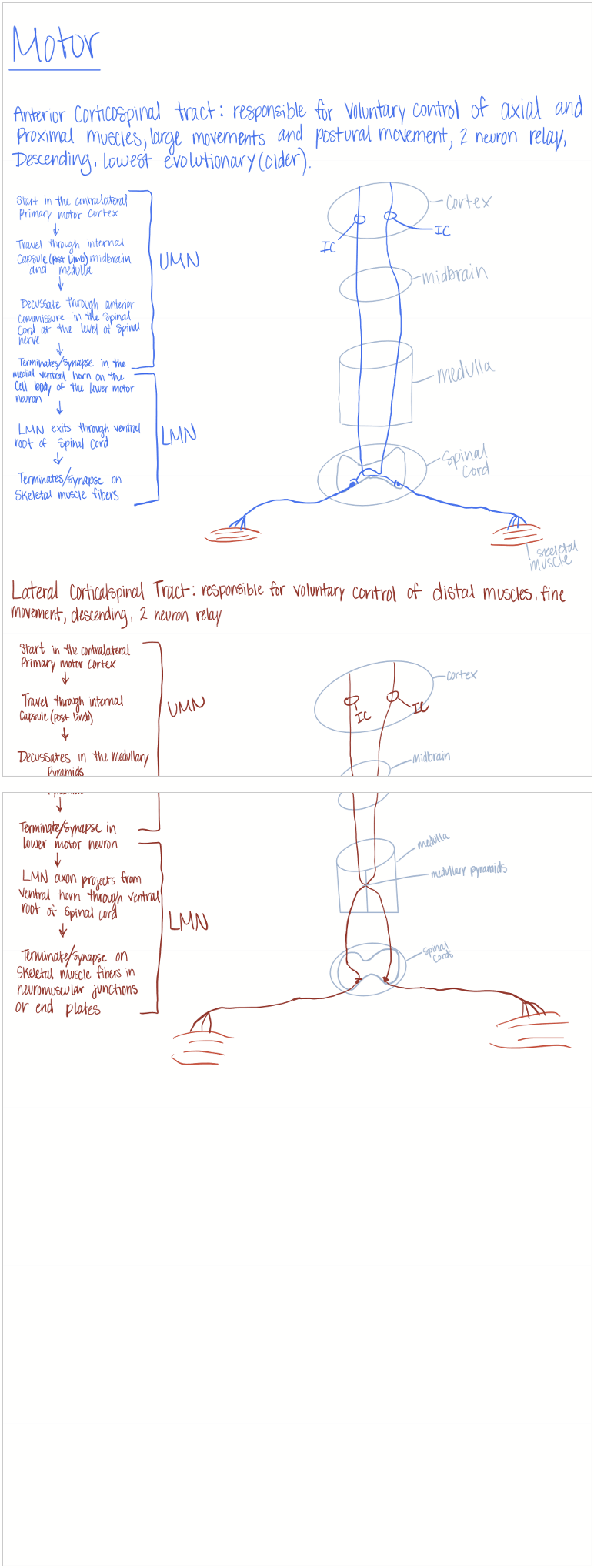6d Somatic Motor System
1/8
There's no tags or description
Looks like no tags are added yet.
Name | Mastery | Learn | Test | Matching | Spaced |
|---|
No study sessions yet.
9 Terms
Where is the cerebellum relative to the brainstem?
Dorsal
What is the function of the cerebellum?
Sensory-motor coordination of ongoing sequential movements
Receives afferents from vision, vestibular apparatus, proprioceptors, and motor cortex
Coordinated thought & Strategy
What are the 3 functional areas of the cerebellum.
Cerebrocerebellum or Neocerebellum
Spinocerebellum
Vestibulocerebellum (Flocculonodular node)
Damage to the Vestibulocerebellum/Flocculoonodular node presents as what?
Presentations resembling lesions in vestibular apparatus: Balance issues and Nystagmus
Etiologies for cerebellar disease are what?
Alcohol
Stroke
Trauma
Astrocytoma: type of tumor affecting children
Multiple Sclerosis
Vit B12, Vit E, and thiamine deficiency
Degenerative disease
Infections
Genetic
Presentations of Cerebellar Disease
General Patterns:
Ipsilateral
Hours or days of imbalance/dizziness/ vertigo with spontaneous nystagmus
Presentations:
Ocular disturbances
Ataxia: in-coordination of movement and thought
What are some ocular disturbances of cerebellar disease?
Impaired smooth pursuit, not being able to foveate on a moving object
Nystagmus: bidirectional horizontal nystagmus, nystagmus changes direction with changes in gaze; can have a down-beat nystagmus
What are some ataxia issues a patient with cerebellar disease can present?
Gait; staggering or unable to tandem gait
Dysmetria: instability as limb approaches target
Intention tremor: tremor increases in magnitude as target is approached
Dysdiadochekinesia: impairment of rapid, supinationand pronation of the hand
Pendular knee jerk reflex
Dysarthria: scanning speech in which words are broken into syllables
Know the lateral and anterior corticospinal tract.
